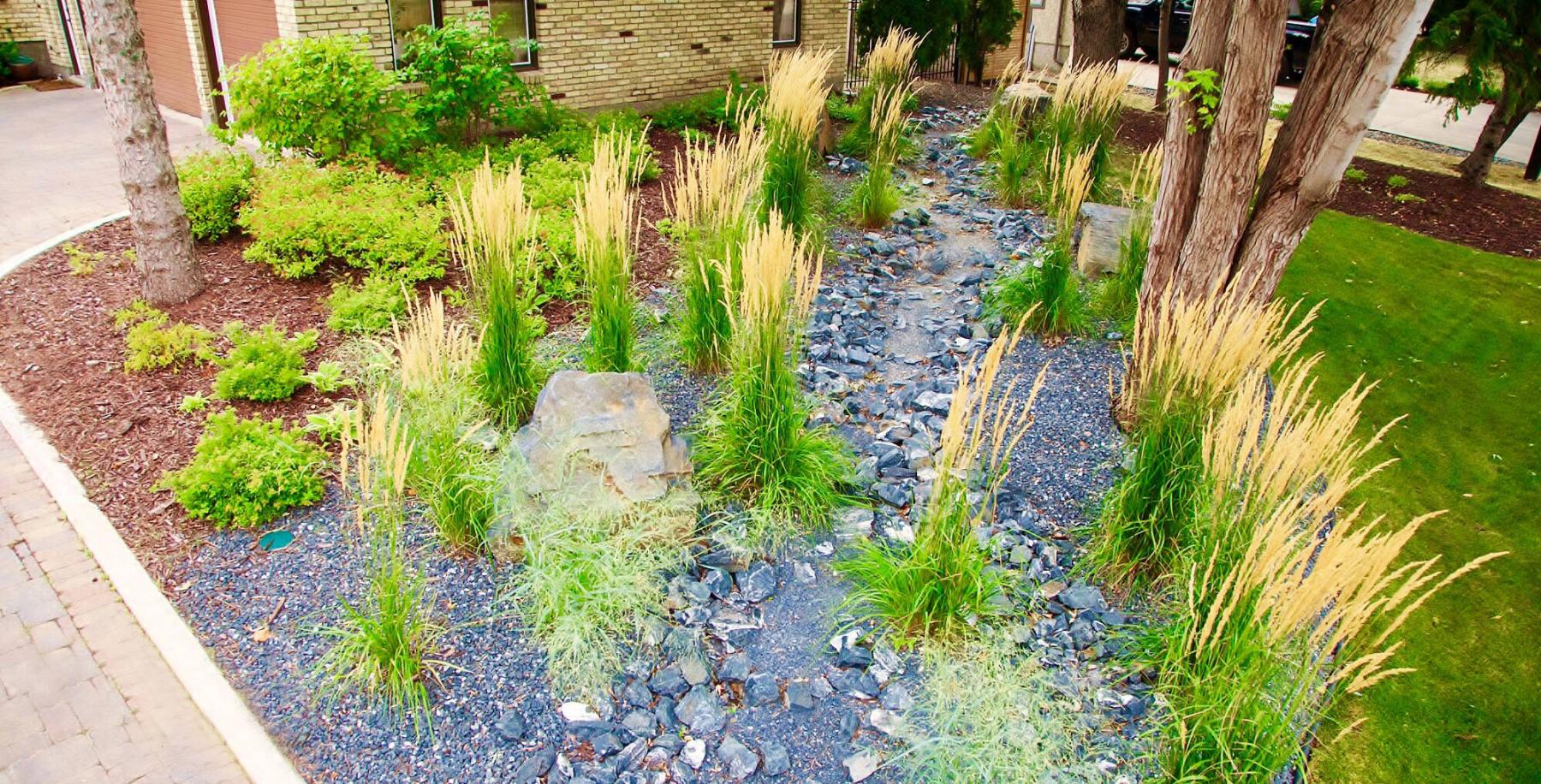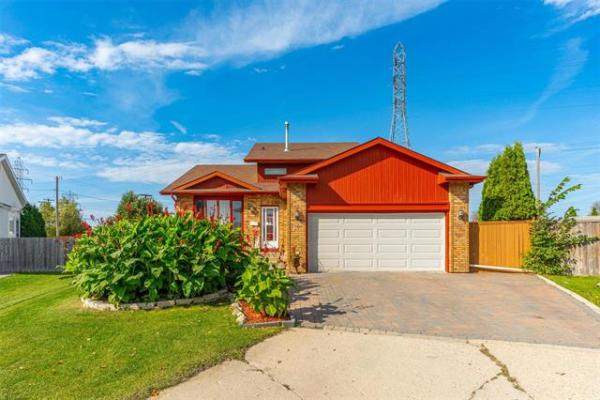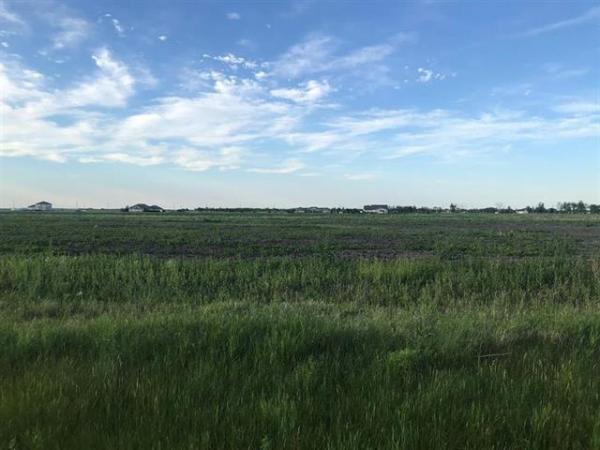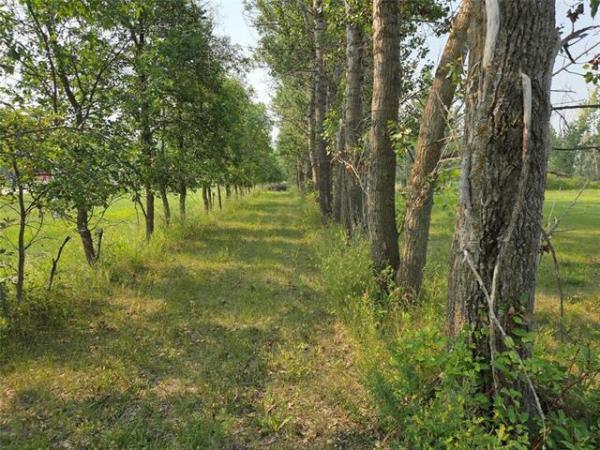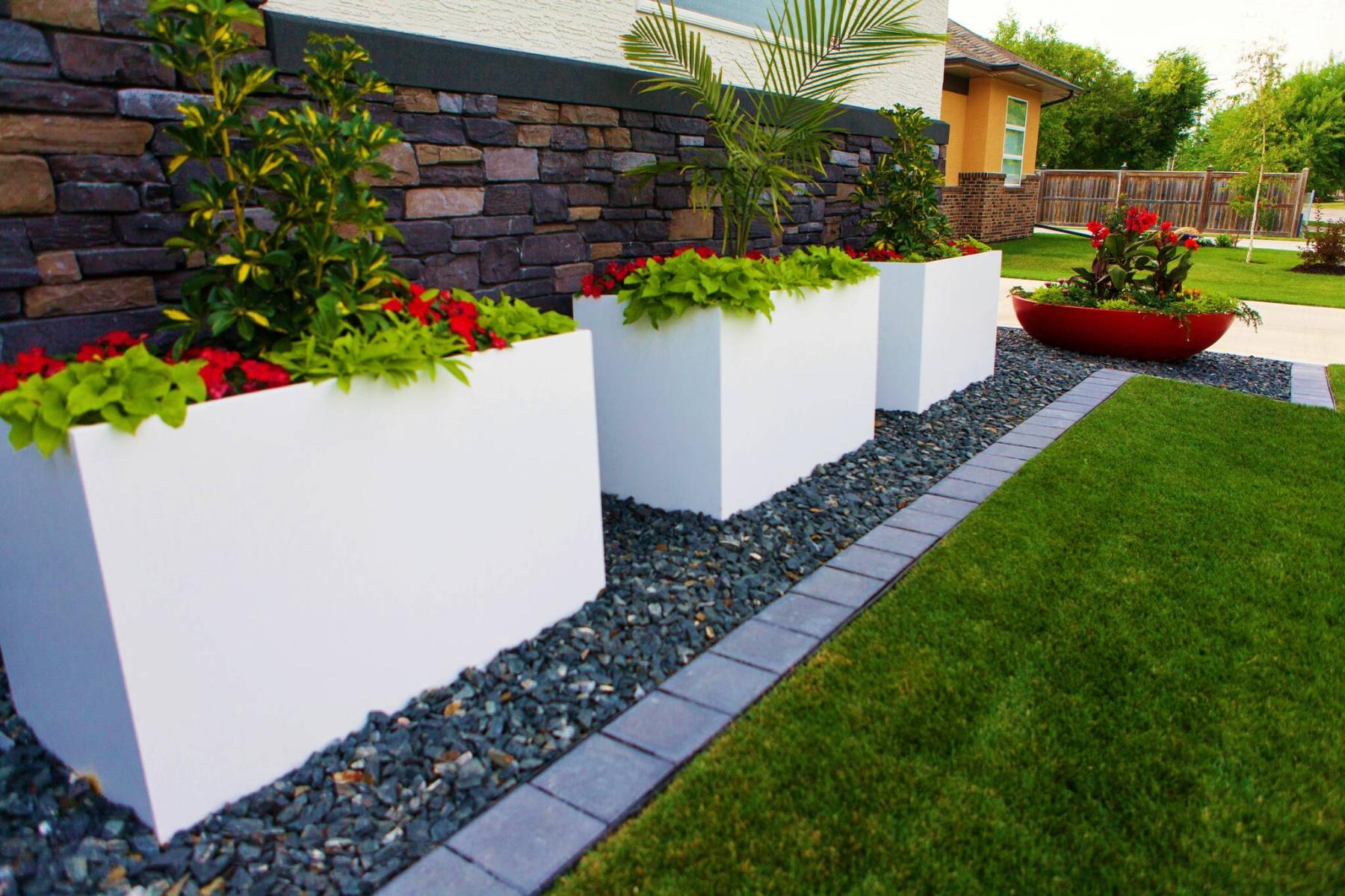
Colleen Zacharias / Free Press
A gravel layer around your house foundation is permeable and you can beautify it with plants.
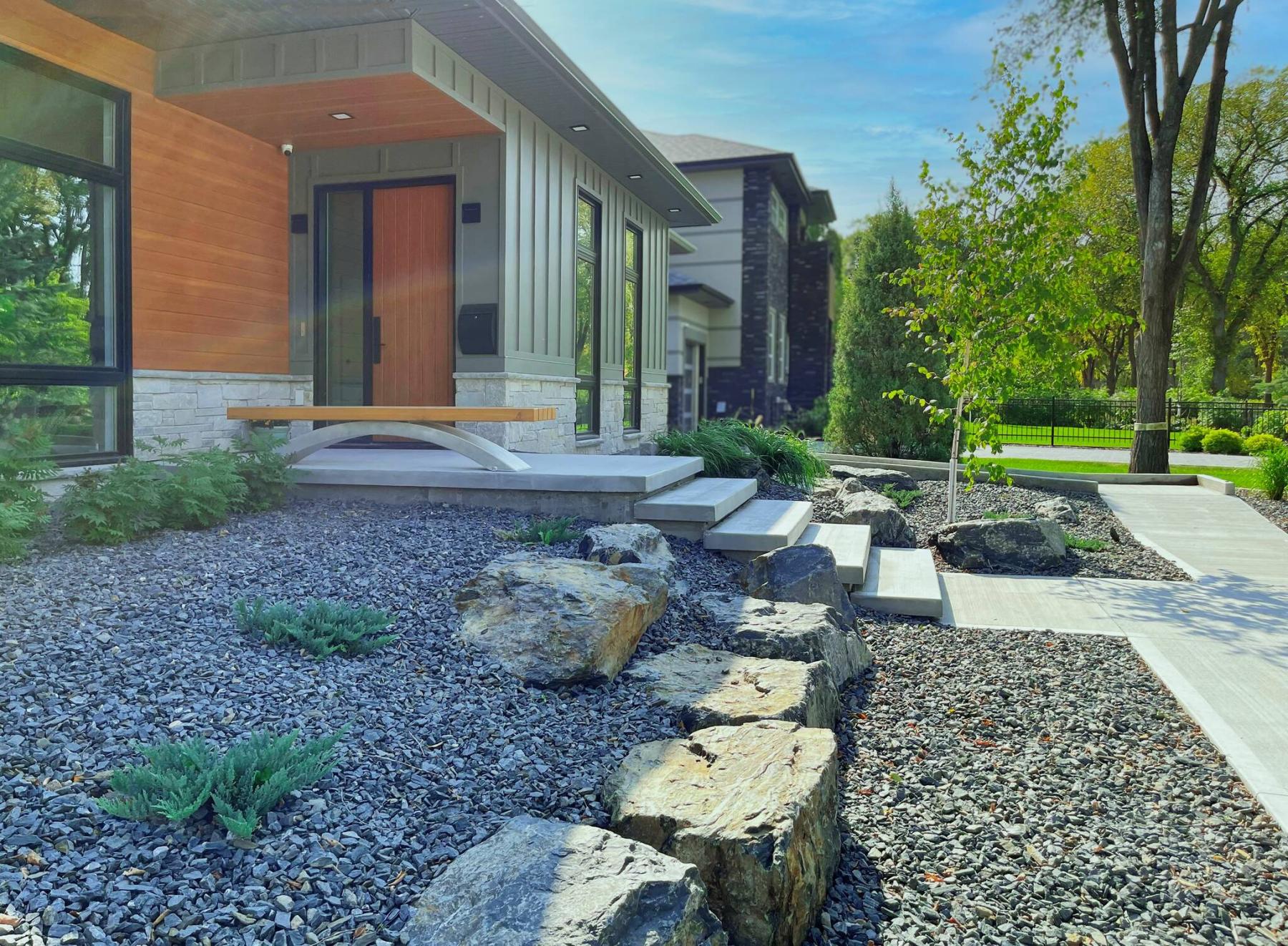
B. Rocke Landscaping
Proper grading and adaptive solutions such as the use of boulders are sustainable actions in this resilient landscape design.
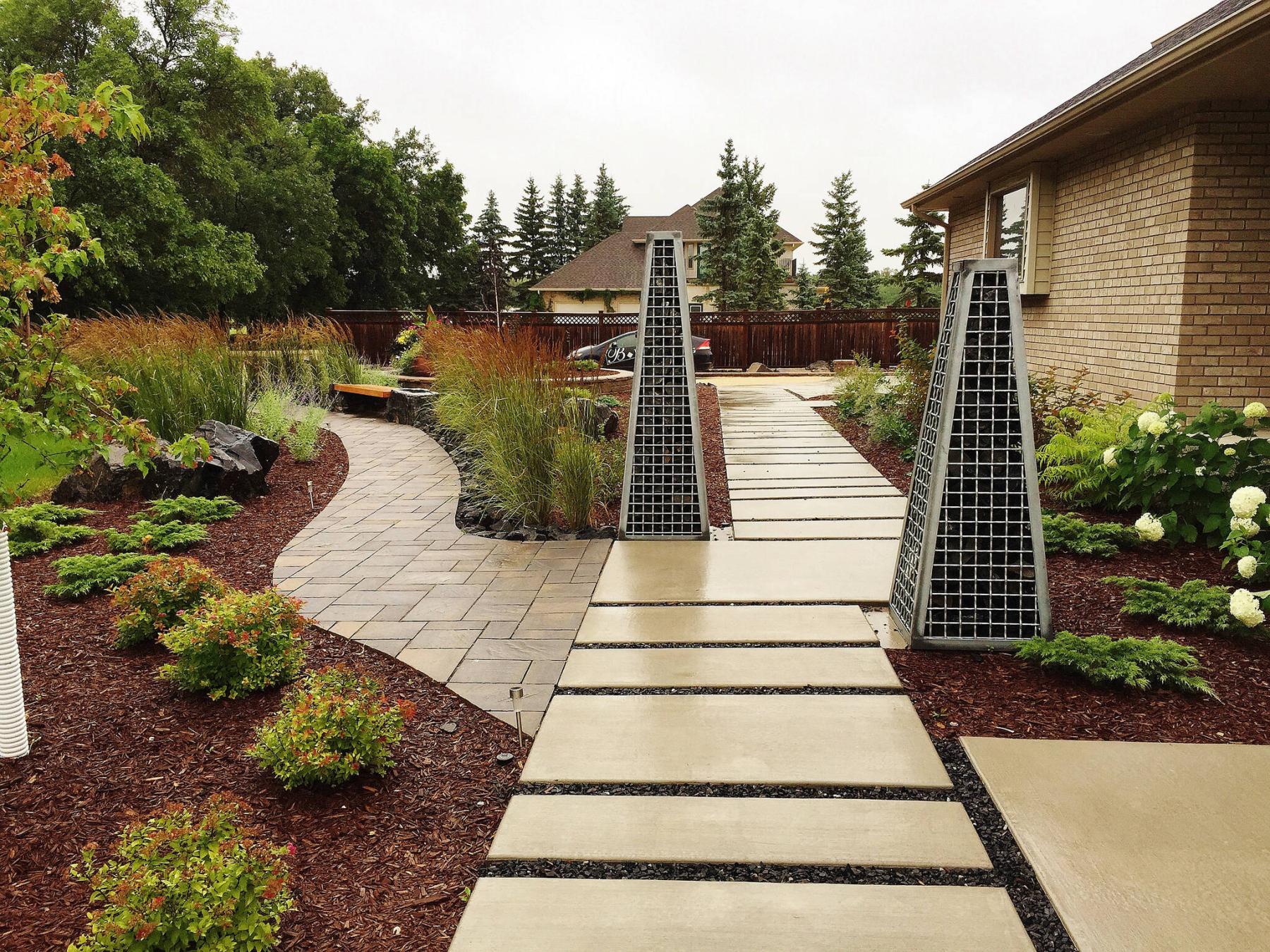
B. Rocke Landscaping
Drainage solutions: Install a permeable pathway and keep hardscaping a distance away from your house foundation.
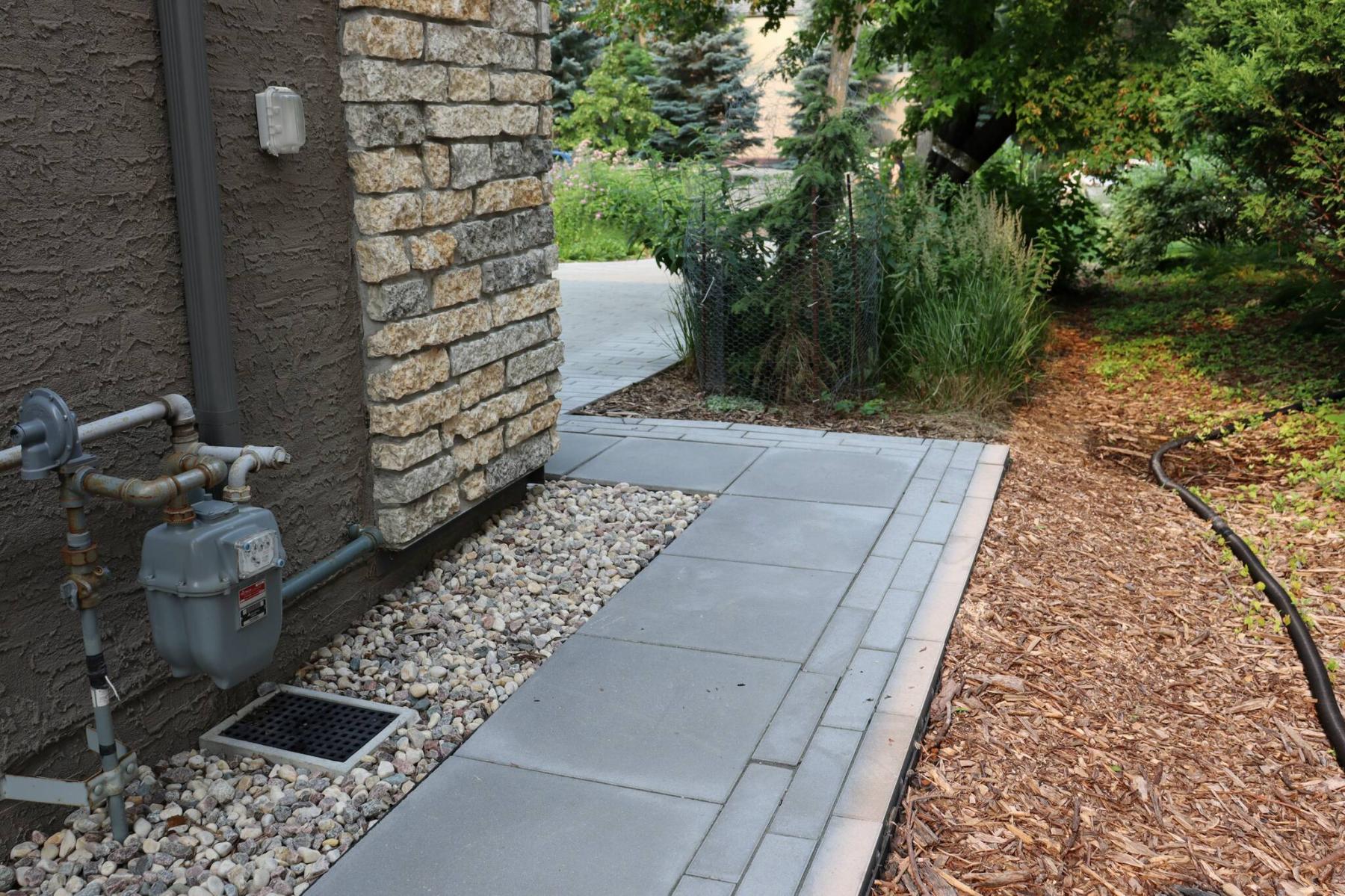
Colleen Zacharias / Free Press
Water from a roof flows into the rain drain situated beneath a downspout where it is diverted into pipes below a sidewalk and absorbed into a mulched swale.
Does the changing climate influence not only your plant choices but also your landscape design decisions and considerations for good drainage? To adapt to more frequent intense rainfall events, homeowners need to know where excess surface water flows on their property. Diverting water away from your house foundation as quickly and efficiently as possible is essential.
But it is also becoming increasingly important to look at ways that your residential property can absorb excess moisture from heavy rainfall events to avoid overwhelming the City’s aging sewer system. The impact of stormwater runoff may have been the furthest thing from a homeowner’s mind during the recent years of drought. What a difference a year makes. Drainage is top of mind for many homeowners today.
Recently I met with Byron Rocke, owner of B. Rocke Landscaping and Rocke Developments, a Winnipeg-based industrial business park. Rocke estimates that seven out of 10 calls he has received from homeowners this year are related to drainage issues.
“When we design landscapes, we always correct the drainage so that everything is sloping away from the house foundation,” said Rocke. “It is important to ensure that paved or concrete surfaces have a one percent slope away from your house and all other areas a 2 percent slope for effective drainage.”
But in combination with grading, we must manage water not just on the landscape but also off the roof,” said Rocke. Roofs are impermeable and what homeowners often do not account for, he said, is the roof watershed. “All the eavestroughs need to be able to direct water away from the roof.” Rocke recommends installing a rain drain which can help to manage runoff coming off your roof by carrying water down and away from your house using underground pipes.
On a recent garden tour, I visited the property of Lisa Renner and was interested to see that she has a rain drain situated beneath the downspout on her attached garage. Opposite the rain drain which is flush with the ground is a concrete sidewalk. Adjacent to Renner’s sidewalk is a swale, a shallow mulched depression which runs along the narrow space between her property and that of her neighbour’s.
Renner’s landscape was designed by John Harper, owner of Studio 169 Landscape Architecture. In an email response to my inquiry, Harper said that the rain drain provides a node (the box) for incoming and outgoing water pipes. “The pipe receives water from the downspout extension in the box before going under the concrete walk to the surface drainage swale where it releases water from the roof of the garage.”
A perforated pipe was used by the contractor, C&G Quality Hardscapes, to allow some additional drainage into the gravel base under the walk as the water moves toward the drainage swale. “These pipes are covered with a fabric “sock” to keep dirt from clogging them,” said Harper. “This combined approach using different drainage solutions offers an advantage when you have so little distance in which to dispose of water.”
In addition to diverting surface water flow into a swale, homeowners can also intercept excess surface water into a garden bed or a dry stream bed (sometimes called a dry creek bed). A dry stream bed does not have water running in it except when it rains. It helps to solve water runoff problems by allowing water to slowly percolate into the ground below. A dry stream bed is a design solution that works well for a natural slope or a low, swampy area in the landscape, said Rocke. A dry stream bed or even a gravel layer around your house foundation can be made more beautiful by adding plants.
Managing water on your landscape is also important to protect your hardscaping. “Water is the biggest cause of issues with landscape heaving,” said Rocke. “I look at it from the perspective of protecting my client’s investment. I want it to last longer. Whenever we design a plan for a client, there is the infrastructure – paving stone or concrete, for example – for the seating areas. You want to get all that water away from the base, otherwise if it is saturated into the clay beneath, it is going to heave in winter and put more stress on the hardscaping.”
It is important to not install hardscaping right up against your foundation, said Rocke. “A paving stone patio should be a minimum of 1.5 metres from your house foundation and ideally three metres away. Your design can include garden space between the house and your patio and the only hardscaping you might have in that space would be a connecting walkway.” If existing brick or paved areas are directly adjacent to your house foundation, make sure to reset any areas that have shifted or are sloping toward your house, said Rocke.
A permeable walkway that consists of paving slabs that are separated by narrow gaps which are filled with crushed rock or pea gravel will also help to intercept runoff by allowing rainwater to percolate into the ground.
“There is a nice green angle to many of these solutions but at the end of the day, homeowners are trying to make sure they don’t have a big expense of repairing their house foundation from future water damage,” said Rocke. Fixing landscape drainage issues brings us back to the importance of proper grading. “It’s hard for homeowners to visualize grade deficiencies and drainage, but you can pick up some clues from the fence line. I use a laser level to determine which way the fence line is sloping in each direction.” There are a variety of ways to correct grade deficiencies that include the use of materials such as clean fill, soil, or limestone.
But what if you are managing not only your watershed but also the watershed that comes off your neighbour’s property because it was built up higher than your property? “That is harder for me to correct,” said Rocke, “because I can only change my client’s property.” In some cases, extensive regrading may be required. “Or we may be able to funnel the surface water that is draining into a client’s property to one part of their yard and make it into a rain garden.”
A resilient landscape requires strategic planning and adaptive solutions. For a client who was building a new home, Rocke designed a boulder wall a distance away from the house foundation rather than a retaining wall. “On a new build, your foundation is going to settle. I was concerned that if I built a straight solid retaining wall, there could be some movement in three year’s time. With boulders, though, you’re not going to see any visible imperfection.”
Whether you are designing a new or existing property or planning a landscape project in phases, a master plan is essential, said Rocke. “A master plan helps to maximize your return on investment (ROI) and takes proper grading and drainage into consideration.”
Make the grade by adapting your landscape to our changing climate.
colleenizacharias@gmail.com
For advice, ideas and tips to keep your outdoor and indoor plants growing, sign up to receive Winnipeg Gardener, a free monthly digital newsletter I write for the Winnipeg Free Press at https://www.winnipegfreepress.com/newsletter/winnipeg-gardener

